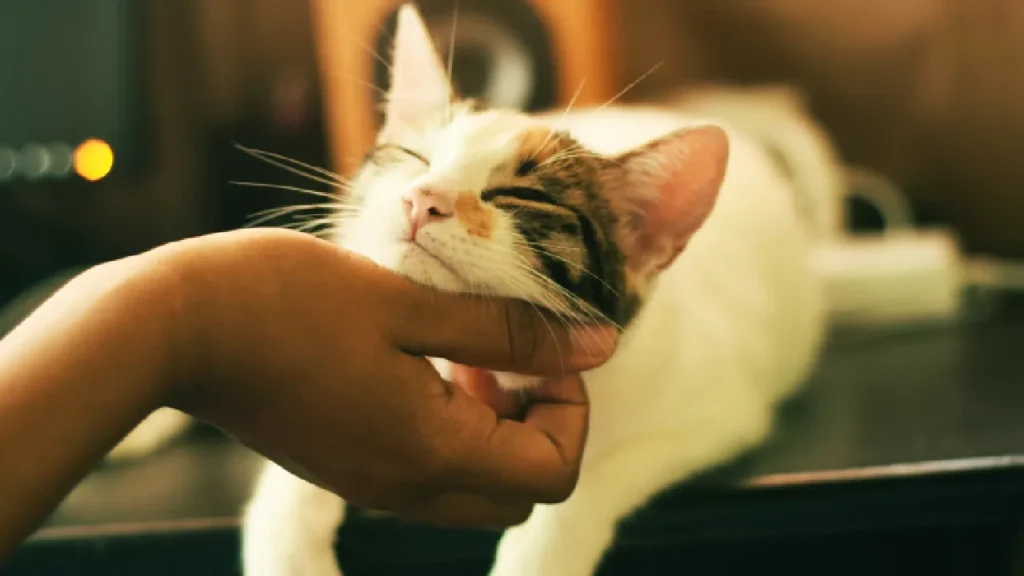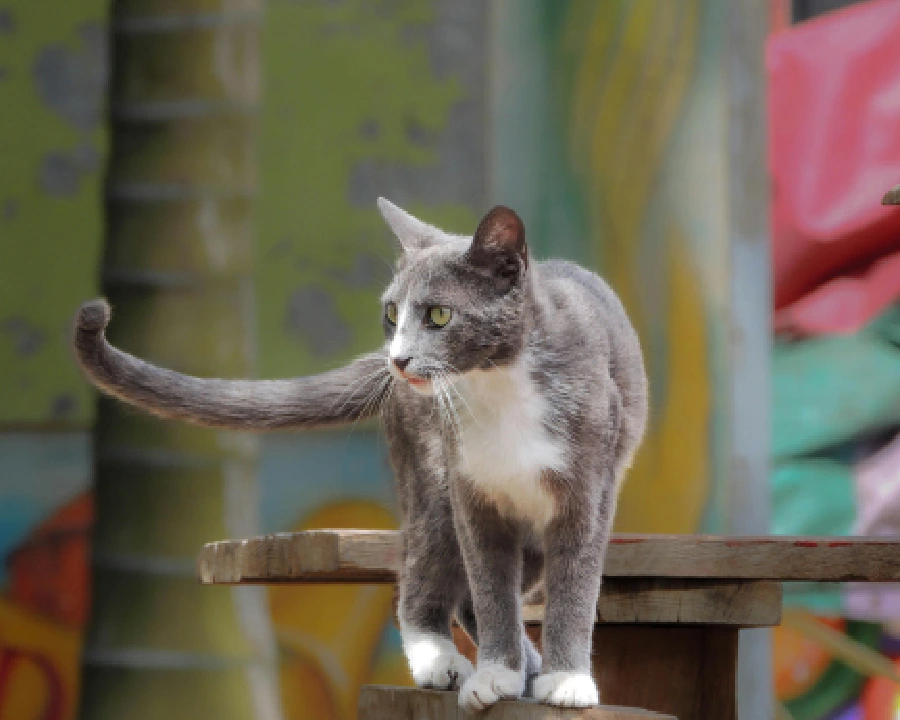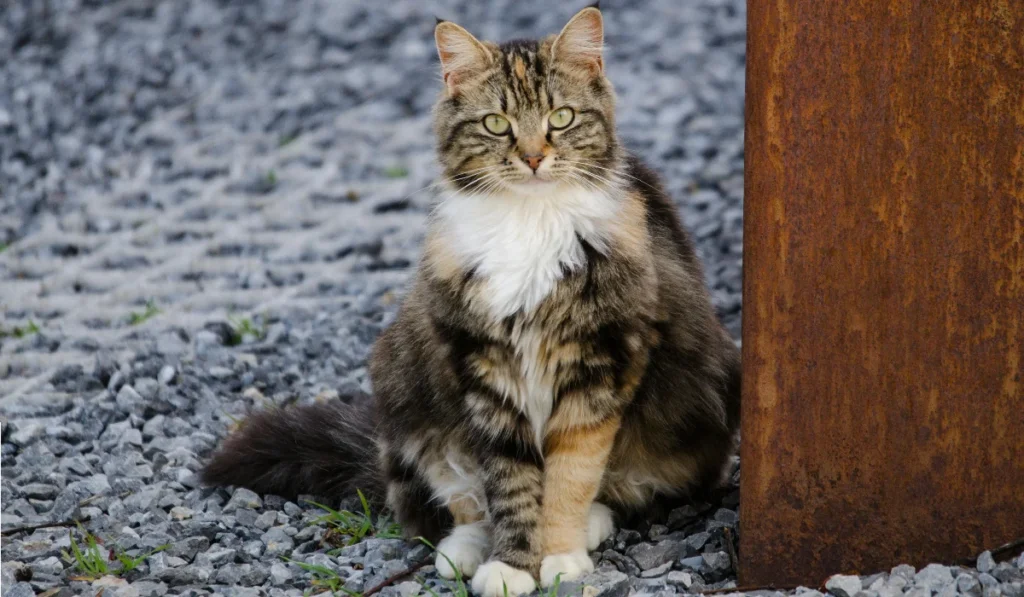
Have cats ever left you scratching your head? You’re not alone! These furry friends can be puzzling at times. But don’t worry – we’re here to help you understand your feline companion better. Let’s dive into the world of cat behaviors and explore what makes our kitties tick.
Cats are unique creatures with their own set of habits. Some of these behaviors come from their wild ancestors. Others develop as they adapt to living with humans. By learning about these behaviors, you can build a stronger bond with your cat.
Ever found your cat in a tiny box? It’s not just for fun! This behavior comes from their wild past. Small spaces make cats feel safe and protected. To make your cat happy, try these tips:

Your cat will appreciate having these safe spaces to retreat to when they need some alone time.
Have you seen your cat “making biscuits” on a soft surface? This cute behavior starts when they’re kittens. Kittens knead their mother’s belly to get milk. For adult cats, kneading means they’re happy and content. Here’s what you should know:
If the claws become an issue, try trimming them or using a thick blanket as a barrier.
A cat’s tail can tell you a lot about their mood. When your cat approaches with a tail straight up, it’s a good sign! This “tail up” pose means they’re happy to see you. It’s their way of saying hello. Remember to:

Paying attention to tail language can help you understand your cat’s needs better.
Has your cat ever woken you up with a sudden burst of energy? These nighttime sprints are called “zoomies.” They’re normal cat behaviors, but they can be disruptive. Here’s why they happen:
To manage nighttime activity, try these tips:
With some adjustments, you can help your cat settle down at night.
Some cats bring “presents” to their owners. These gifts might be toys or even small animals. While it may seem gross, your cat is trying to be nice! Here’s what you need to know:
To handle this behavior:
Remember, your cat is showing affection in their own way.
Cats use many sounds to communicate. Each noise has a different meaning. Here’s a quick guide:
Listen to your cat’s sounds and watch their body language to understand them better.
Have you noticed your cat blinking at you slowly? This is a special cat behavior! It’s called a “cat kiss” and means they trust you. Here’s what to do:
It’s a simple way to show love to your feline friend.
Many cats prefer running water to still water in a bowl. This behavior comes from their wild ancestors. Moving water was often safer to drink in nature. To cater to this preference:
Providing fresh, moving water can encourage your cat to drink more.
Scratching is a normal cat behavior, but it can be frustrating for owners. Cats scratch for several reasons:
To manage scratching:
With the right tools, you can protect your furniture and keep your cat happy.
Not all cats react to catnip, but those who do can be quite entertaining! Catnip sensitivity is genetic. Here’s what you should know:
Use catnip as an occasional treat to enrich your cat’s environment.
What are the behaviors of cats?
Cats exhibit a range of behaviors, including kneading, scratching, purring, and hiding in small spaces. These behaviors can be rooted in their wild ancestry or adapted to their life with humans. Common behaviors also include meowing, tail signals, and nighttime zoomies.
How to tell if a cat loves you?
A cat shows affection in several ways. Look for signs such as slow blinking, purring, head-butting, and following you around. Cats may also sit on or near you, knead on soft surfaces, or groom you as signs of love and trust.
What is abnormal cat behavior?
Abnormal cat behavior can include sudden aggression, excessive hiding, changes in eating or drinking habits, or inappropriate elimination. These behaviors might indicate health issues or stress. If you notice any significant changes, it’s best to consult a veterinarian.
Why do cats behave weird?
Cats might behave oddly due to a variety of reasons, including boredom, stress, illness, or changes in their environment. Behavioral quirks are often normal but can sometimes signal underlying issues. Observing your cat’s behavior and making necessary adjustments to their environment can help manage unusual behaviors.
Understanding cat behaviors helps create a happy home for both you and your feline friend. Remember, every cat is unique. They may not show all these behaviors, and that’s okay! The key is to observe, learn, and respect your cat’s individual personality.
By providing for your cat’s needs and understanding their behaviors, you’ll build a stronger bond. Enjoy the journey of discovery with your furry companion!

If you ever have concerns about your cat’s behavior, don’t hesitate to talk to your vet. They can offer personalized advice to ensure your cat stays healthy and happy.
Here’s to many years of purrs, play, and feline friendship!
Want to learn more about cats? Visit our site for more insights and information!
[…] for dog food, similar issues can affect cats. It’s crucial to be aware of any changes in your cat’s behavior or health, especially after introducing a new […]